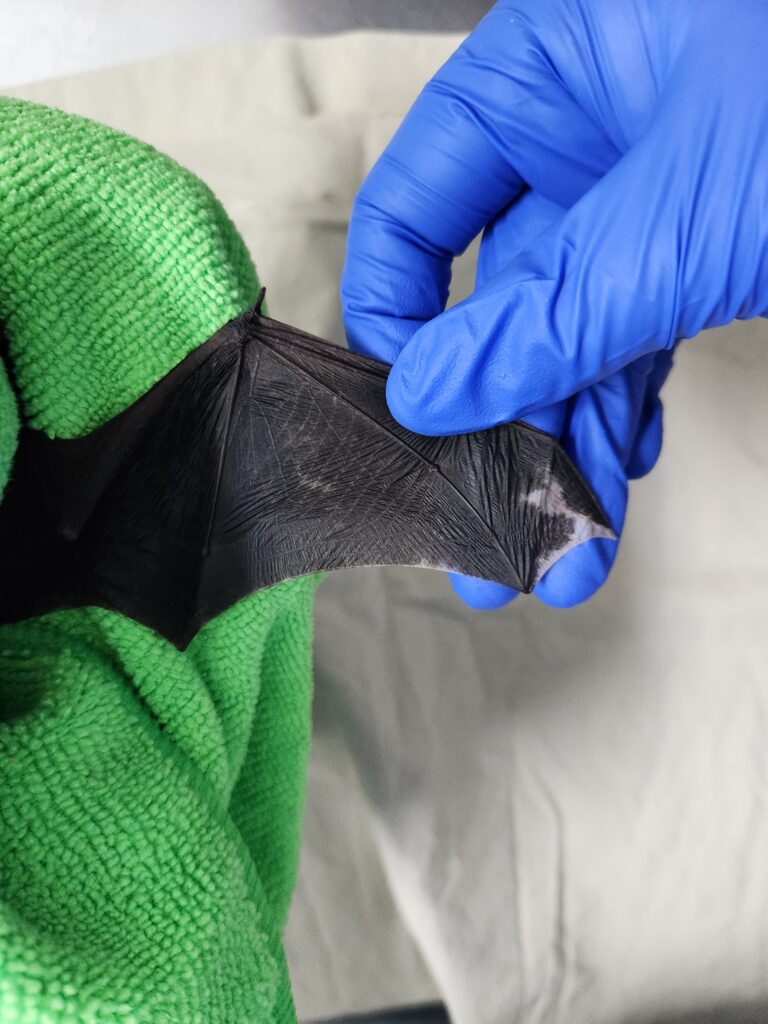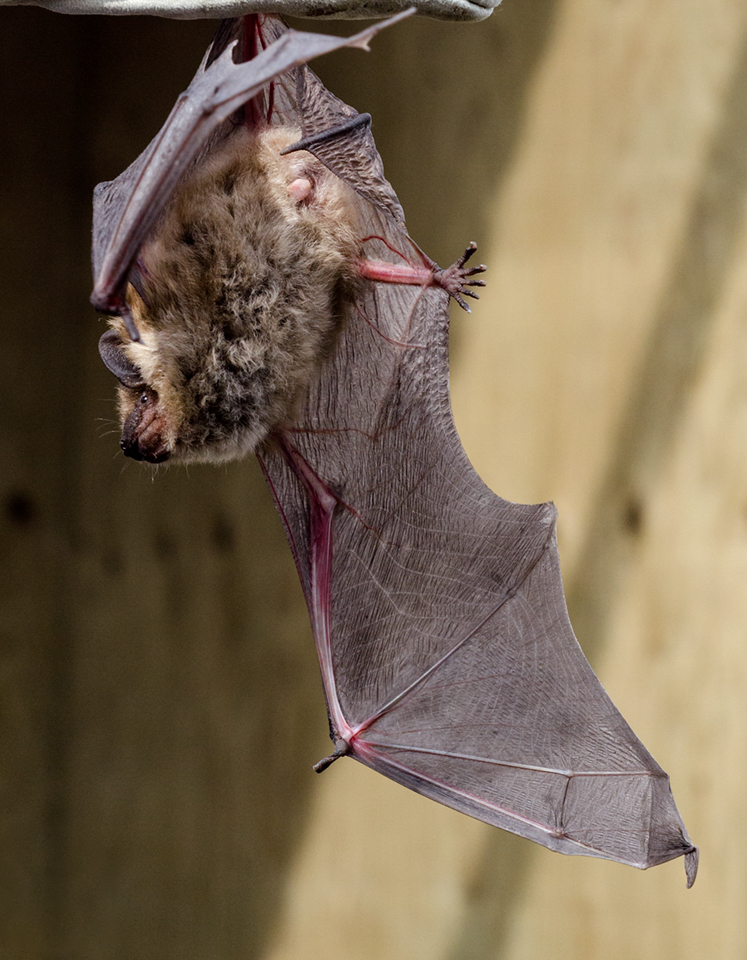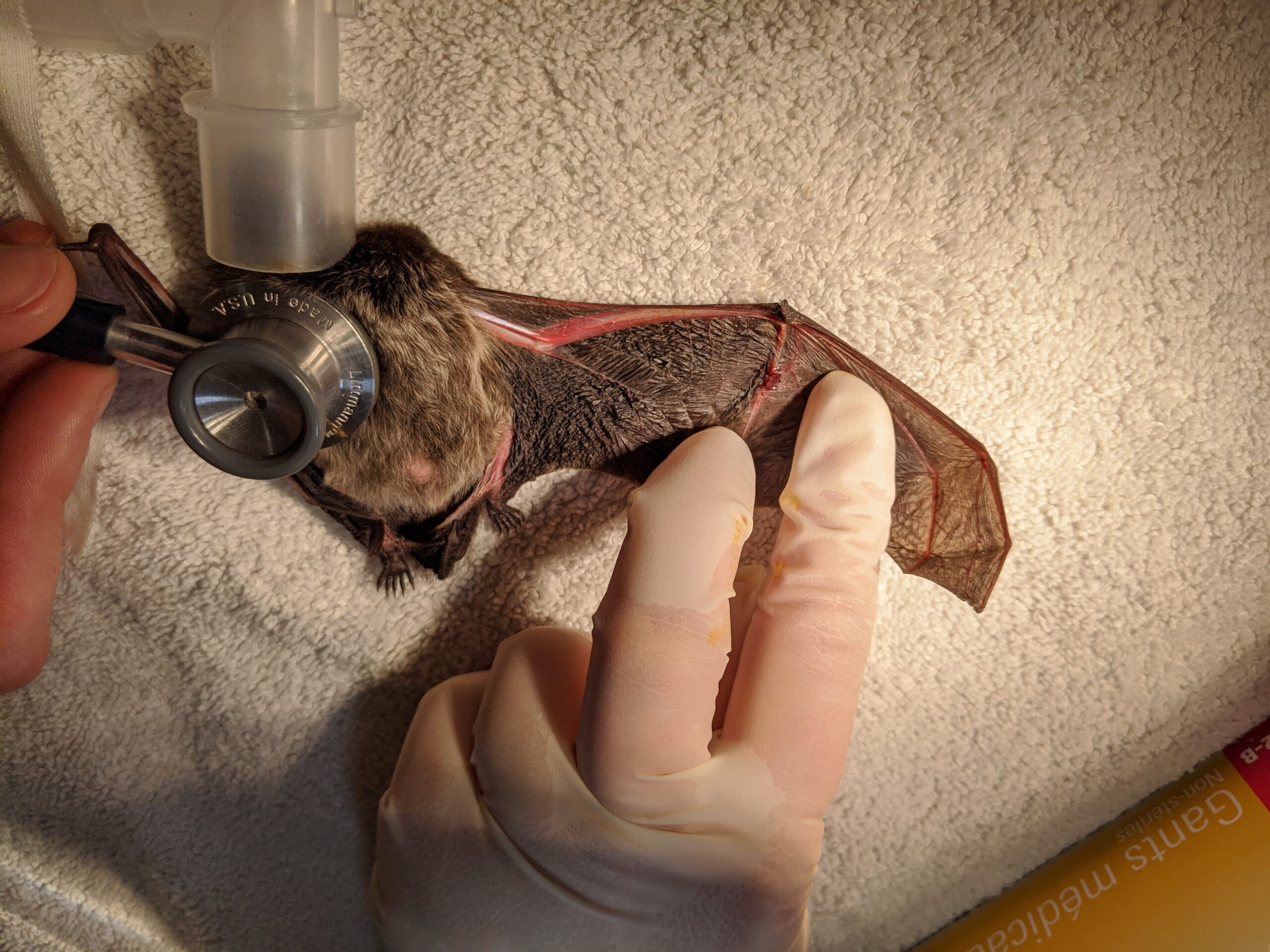By Courtney Collins
Bats are mammals, like us. They are also the only mammals that can fly.1 Bats have five fingers or digits, like humans, but their arms and hands are specialised for flight.2,3 The wrists of bats are less flexible compared to other mammals to ensure appropriate support for flight.4 There are more than 1200 species of bats, all of which are in the biological order Chiroptera, meaning “hand wing.”5,6
There’s a great depiction of bat vs human forelimbs here: https://www.nps.gov/subjects/bats/how-bats-fly.htm

Did you know that bats and birds have quite different wings? This is an example of convergent evolution – where different species evolve similar traits completely independently.7
Let’s chat about bat wings more specifically. The fossil record suggests that bats evolved from an ancestor that was insectivorous (like most bats in North America), arboreal (lived in trees), and had the ability to glide. At some point around 65 million years ago, bats evolved powered flight from gliding.8,9
While bats have slower wing beats than birds, their five digits allow them to have increased control and movement of their wings and flight in comparison.20 Moreover, while bird wings are made up of feathers, bat wings are made of skin. This skin is a very thin membrane, stretched between each digit that makes up their ‘arm’. The wing membrane is so thin, in the right light, one can see the blood vessels within the wing. Although this membrane appears to be bare skin, it is covered in very small, fine hairs.11 This thin membrane creates additional flexibility in bat wings and manoeuverability in flight. Finally, while bird wings have few joints, bat wings have more than two dozen joints, further increasing the flexibility and effectiveness of their flight.12

You may be wondering if bats have such a thin skin membrane for wings, how do bat wings heal from injuries? Despite being so thin and flexible, bat wings are relatively tough. Nevertheless, tears and holes in the wing membrane does happen (this is a common occurrence when cats attack bats). Luckily, bat wings have the fastest healing time of all mammals, and tears can often heal on their own (if they are not extensive and given the bat is in relatively good health overall).13,14 Several research studies have examined flight membrane wound healing in bat species and found that, on average, wounds of varying sizes healed in 16 to 34 days.15
Bats are incredible species and are an important part of the ecosystem. If you have questions or see a bat in need of help, please call our Wildlife Hotline at 403-946-2361.
References
- Wikipedia, “Bat flight”, November 22, 2024, https://en.wikipedia.org/w/index.php?title=Bat_flight&oldid=1258860122
- Bat Conservation International, “Bats vs. Birds”, February 9, 2023, https://www.batcon.org/bats-vs-birds/
- Wikipedia, “Bat flight”, November 22, 2024, https://en.wikipedia.org/w/index.php?title=Bat_flight&oldid=1258860122
- Phil Myers, “Bat Wings and Tails”, Animal Diversity Web, 2025, https://animaldiversity.org/collections/mammal_anatomy/bat_wings/
- Hedenström, Anders, and Johansson, L Christoffer. “Bat Flight”. Current Biology 25, no. 10 (May 1, 2015): R399–402. https://doi.org/10.1016/j.cub.2015.04.002
- National Park service, “How Bats Fly”, October 9, 2024, https://www.nps.gov/subjects/bats/how-bats-fly.htm
- Holly Chetan-Welsh and Lisa Hendry, “Convergent evolution explained with 13 examples”, Natural History Museum, n.d., https://www.nhm.ac.uk/discover/convergent-evolution.html
- Hedenström, Anders, and Johansson, L Christoffer. “Bat Flight”. Current Biology 25, no. 10 (May 1, 2015): R399–402. https://doi.org/10.1016/j.cub.2015.04.002
-
John R Hutchinson, “Vertebrate Flight Chiropteran Flight”, University of California Museum of Paleontology (UCMP) Berkeley, January 11, 1996, https://ucmp.berkeley.edu/vertebrates/flight/bats.html
- Bill Dowd, “How Bats Fly Compared to Birds?”, Skedaddle Humane Wildlife Control, May 31, 2020, https://www.skedaddlewildlife.com/location/whitby/blog/how-bats-fly-compared-to-birds/
- Phil Myers, “Bat Wings and Tails”, Animal Diversity Web, 2025, https://animaldiversity.org/collections/mammal_anatomy/bat_wings/
- Ker Than, “Why Bats Are More Efficient Flyers Than Birds”, January 22, 2007, LiveScience, https://www.livescience.com/1245-bats-efficient-flyers-birds.html
- Acer Ecology, “Life of a Bat Carer – Part 2: Rehabilitation and Release”, January 29, 2019, https://www.acerecology.co.uk/life-of-a-bat-carer-part-2-rehabilitation-and-release/
- Faure, Paul A, Re, Daniel E, and Clare, Elizabeth L. “Wound Healing in the Flight Membranes of Big Brown Bats”. Journal of Mammalogy, Volume 90, Issue 5 (October 15, 2009): 1148–1156. https://doi.org/10.1644/08-MAMM-A-332.1
- Pollock, Tyler, Christian R. Moreno, Lida Sánchez, Alejandra Ceballos‐Vasquez, Paul A. Faure, and Emanuel C. Mora. “Wound Healing in the Flight Membranes of Wild Big Brown Bats”. Journal of Wildlife Management 80, no. 1 (September 29, 2015): 19–26. https://doi.org/10.1002/jwmg.997.




